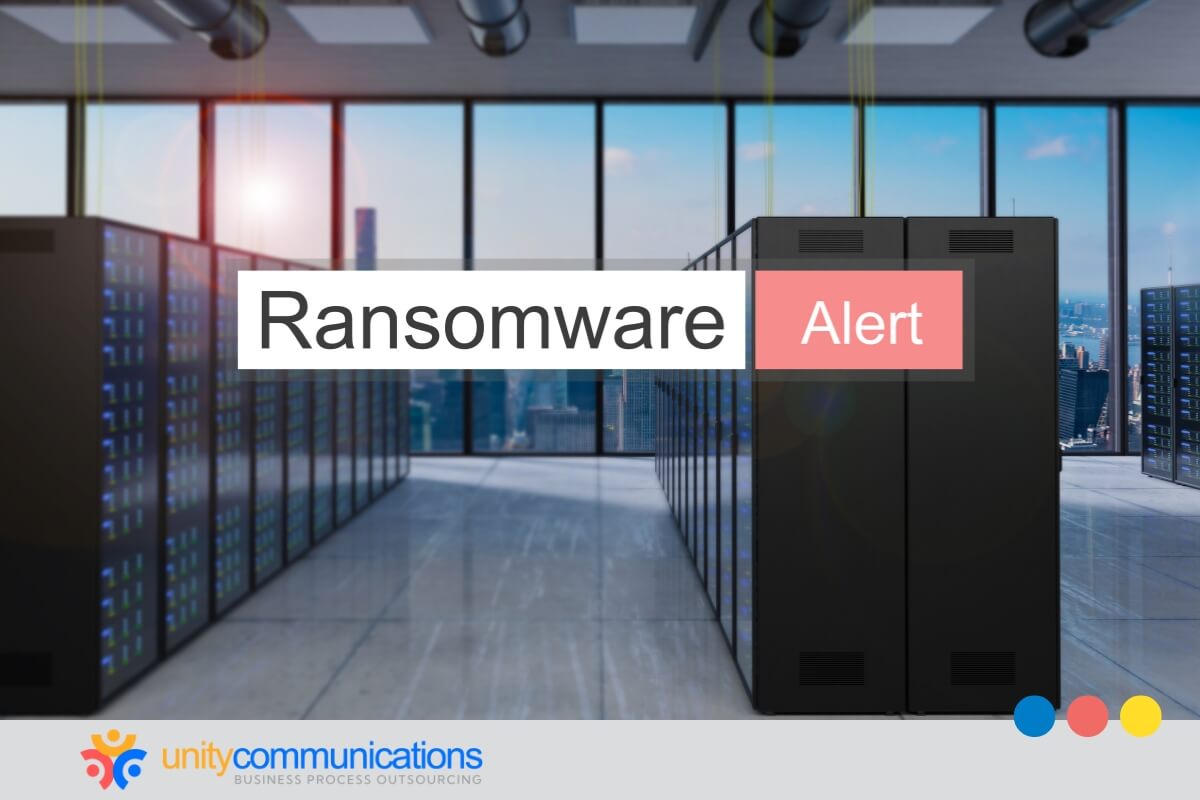Table of Contents
Multi-vendor outsourcing brings speed, scale, flexibility, and specialization. However, it also introduces cybersecurity threats that can disrupt operations and breach data. Business process outsourcing (BPO) usually requires third-party access to sensitive systems, increasing online exposure.
This article breaks down the five most significant cybersecurity risks in multi-vendor outsourcing, ranging from a lack of robust controls to data misuse and limited oversight that contributes to compliance gaps. This guide explores proven steps on how to reduce exposure to these threats.
Keep reading to see where your exposure might lie and how to stop threats before they spread across your vendor network.
Most dangerous cybersecurity threats

What is BPO in multi-vendor outsourcing, and how does it relate to cybersecurity risks? BPO involves contracting external providers to handle non-core business functions, such as customer service, IT support, or finance. In multi-vendor setups, organizations partner with several external providers, each responsible for different services or regions.
Even a single BPO partner might access your sensitive data. However, in a multi-vendor model, this access is distributed across several third parties, each potentially tapping into internal systems, cloud platforms, or proprietary databases. This broader exposure multiplies the points of vulnerability.
As reliance on multiple vendors grows, so do cloud and data compliance concerns. According to recent data, about 83% of businesses are concerned about data sovereignty, while 55% say evolving digital privacy laws have made compliance more difficult.
The complexity introduces a range of cybersecurity risks in multi-vendor outsourcing that you must address, including:
1. Vendor security gaps: How weak controls lead to breaches
Evaluating security measures is vital in managing cybersecurity risks in multi-vendor outsourcing. Their systems, tools, and networks must be safe from potential vulnerabilities. Failure to conduct comprehensive vendor risk assessments can lead to data breaches, security flaws, and compliance issues that compromise your organization’s integrity.
To strengthen security across vendor relationships, consider these strategies:
- Assess vulnerabilities in vendor systems. Find potential holes in the vendor’s infrastructure and perform frequent audits to detect security flaws. Without proper examination, these systems can become easy targets for malicious actors and weaken the overall vendor risk posture.
- Review vendor tools and technology. Determine whether service providers’ tools and applications are routinely updated, meet security standards, and align with your internal security protocols. Hackers, malware, and unauthorized users frequently exploit legacy or unprotected systems and software.
- Audit vendors regularly. Regularly evaluate each vendor’s security practices to identify and mitigate emerging risks. This includes reviewing their adherence to regulatory compliance, approach to handling sensitive data, and response to security incidents or policy breaches.
- Track and manage vendor access. Track how vendors access and handle customer information and confidential records, maintaining compliance with your internal security protocols. Any vendor’s improper data handling can cause vulnerabilities, leading to data loss or exposure.
Effective vendor risk management helps prevent disruptions or cyber threats. Providers accessing essential platforms can introduce risks if their security measures don’t align with your standards. Proactively managing these relationships safeguards customer data and strengthens your overall security posture.
By adopting these practices, businesses can reduce the impact of vendor-related vulnerabilities, foster more secure partnerships, and improve business continuity plans.
2. Data exposure: Poor access controls and over-privileged vendors
In most arrangements, outsourcing requires sharing internal systems with external partners. Without tight controls, this can expose sensitive information to misuse, theft, or leaks. Cybersecurity risks in multi-vendor outsourcing rise when access rights are poorly managed or unchecked.
One breach can ripple through the supply chains, affecting multiple departments and external partners. PwC’s 2024 Global Digital Trust Insights report found that 36% of organizations reported their worst breach in the past three years cost over $1 million, up from 27% the previous year. The rising number and scale of these mega breaches signal deeper vulnerabilities in access controls and vendor systems.
You must enforce strict boundaries and monitor access closely to reduce these gaps. Track how, when, and by whom data is accessed while keeping it protected. Here’s how:
- Implement stringent access controls. Grant vendors access only to the systems and records needed for their function.
- Limit access to critical systems. Keep mission-critical applications isolated unless direct access is required.
- Monitor vendor actions continuously. Set up alerts for abnormal logins, data pulls, or permission changes.
- Encrypt customer data. Use strong encryption for both data at rest and in transit.
- Validate due diligence in onboarding. See how vendors handle identities, authentication, and data storage before approval.
- Review vendor activity logs regularly. Spot unexpected file transfers or privilege escalations before damage occurs.
- Build a layered incident response plan. Outline containment, notification, and investigation steps tied to third-party access abuse.
- Conduct regular access audits. Check user permissions across vendors and adjust based on role changes or project completion.
- Address risks associated with third parties early. Involve your outsourcing partner’s risk management team in setting vendor access policies.
When access is shared, so is risk. Without strict controls, even one vendor’s weak link can become a million-dollar breach.
3. Workflow vulnerabilities: Broken processes that invite cyber threats
In multi-vendor outsourcing, operational and process vulnerabilities are flaws in communication and workflow procedures that can expose businesses to cybersecurity concerns. When vendor partners acquire access to internal systems, these processes must be consistent with strong security protocols to defend against potential risks and breaches.
Cybersecurity risks in multi-vendor outsourcing increase when operations lack precise security requirements or communication between teams and vendors breaks down. Your processes must enforce security at every step. Here’s how to minimize operational vulnerabilities:
- Streamline partner onboarding. Establish clear protocols for integrating new providers into existing workflows while adhering to security standards.
- Assign process ownership. Assign responsibility for every stage of outsourced tasks, maintaining accountability for data handling, security, and operations. This way, ownership stays set and risks are minimized.
- Train internal and vendor teams. Internal teams and vendors should undergo training to understand security protocols, data privacy rules, compliance requirements, and risk management strategies, so everyone stays aligned on protecting sensitive data.
- Map workflows across vendors. Visualize and document the data flow between teams and vendors to identify weak points and opportunities for improving security controls, reducing cybersecurity risks in multi-vendor outsourcing.
- Implement process checks and balances. Set up checkpoints within vendor workflows to monitor data movement and confirm processes adhere to security policies at each stage.
- Build a continuous feedback loop. Foster open communication between internal teams and vendors to identify emerging risks and resolve inefficiencies before they escalate.
The inability to address these loopholes can lead to data breaches, operational interruptions, and regulatory infractions. You can better protect your business from these threats by streamlining vendor processes and improving security protocols.
4. External attacks: Ransomware, DDoS, and third-party exploits
External attacks, such as distributed denial-of-service (DDoS) and ransomware, are persistent threats in multi-vendor outsourcing. Cybersecurity risks in multi-vendor outsourcing rise when vendors lack robust protection measures or are unprepared for handling evolving threats.
For instance, the MOVEit breach in 2023 exploited a flaw in file transfer software, compromising data across 2,000 organizations worldwide. This incident highlights the dangers tied to third-party vulnerabilities.
To prevent incidents, assess how each vendor defends against cyberattacks by evaluating security protocols, architecture, and defense layers. Test incident response plans to match your organization’s procedures. Penetration testing and security drills help identify gaps. Vendors should conduct these tests regularly and share findings.
Also, check how vendors detect and respond to advanced threats, especially zero-day vulnerabilities. These attacks require speed, coordination, and strong internal escalation paths. A good partner should promptly patch, isolate, and respond.
Here are practical ways to strengthen vendor security posture:
- Request recent internal audit summaries related to cybersecurity performance.
- Evaluate how vendors isolate compromised systems to prevent the spread.
- Examine their use of threat-hunting tools or behavioral monitoring.
- Check how they control access for temporary or subcontracted staff.
- Review their policies for retiring outdated software and hardware.
Weak vendor defenses can expose your systems to threats. Prioritize testing and readiness over checklists.
5. Compliance gaps: Regulatory risks from vendor misalignment
Compliance gaps expose organizations to lawsuits, penalties, and breaches. In multi-vendor setups, every service provider must follow the rules tied to your industry. Without consistent oversight, minor lapses grow into costly failures. Cybersecurity risks in multi-vendor outsourcing can stem from misalignment between internal policies and external vendor practices.
Each sector has legal obligations regarding data handling. Specifically, medical providers must comply with the Health Insurance Portability and Accountability Act of 1996 (HIPAA), while firms that process payment data must meet the Payment Card Industry Data Security Standard (PCI DSS). You need proof that the vendors’ systems, staff, and processes match these frameworks.
Subcontractors increase the exposure surface. If your primary vendor hands work to a third party, they must also meet the exact compliance requirements. Many businesses skip this step, assuming the main service provider handles it. That gap can lead to legal exposure, especially if a subcontractor mishandles sensitive data.
Data privacy laws are shifting quickly across regions. The General Data Protection Regulation (GDPR), the California Consumer Privacy Act (CCPA), and similar rules can affect how your outsourcing agreements are structured. Contracts must include clauses that require updates when laws change. Your teams should track these changes and update terms as needed.
Ways to reduce compliance exposure include:
- Request documented evidence of industry-specific compliance certifications.
- Require vendors to identify all subcontractors involved in your service delivery.
- Add review triggers in contracts tied to changes in global privacy laws.
- Review how a BPO provider’s complete data protection affects assessments.
- Ask vendors for audit participation plans and internal compliance procedures.
- Include specific timelines for vendor compliance reviews in all outsourcing agreements.
Regulatory compliance is a continuous obligation across your entire vendor ecosystem. An overlooked subcontractor or outdated agreement can trigger fines, breaches, or legal exposure that risks your reputation and operations.
How to vet and select outsourcing partners

By 2025, 60% of companies will weigh cybersecurity risk heavily when deciding on third-party partnerships. This shift signals growing pressure on IT leaders to raise the bar on vendor security expectations.
Choosing vendors today means scrutinizing their cybersecurity posture as closely as their service capabilities. Because a single breach can ripple across systems, the stakes are higher in multi-vendor setups.
Cybersecurity risks in multi-vendor outsourcing can stem from the vendor screening stage. Inadequate vetting or reliance on basic certifications can overlook vulnerabilities, leaving gaps for external threats. Due diligence provides insight into the vendor’s security practices and capacity to manage potential risks.
To find reliable vendors, combine baseline technical checks with practical assessments of how they respond to risk. Surface-level certifications aren’t enough. You’ll need clear visibility into their day-to-day practices.
Here is a practical guide to assess and select BPO vendors, suppliers, partners, and other subcontractors:
- Request detailed security documentation. Ask for internal security policies, encryption standards, and incident response playbooks.
- Evaluate past breach history. Check if the vendor has suffered data loss events, how they responded, and what changes followed.
- Run independent security audits. Use external assessors to check compliance with ISO 27001, SOC 2, NIST, or other frameworks.
- Check leadership buy-in on security. Gauge executives’ investment in cyber hygiene. Culture matters as much as controls.
- Test for real-time response capability. Ask for timelines on how fast they detect, contain, and report breaches.
- Include SLA terms tied to security. Connect penalties or performance metrics to data protection and threat response, reinforcing the role of service-level agreement (SLA) in effective outsourcing for reducing risk exposure.
Smart vendor selection helps you avoid surprises down the road. By embedding security into procurement, your team reduces exposure, boosts oversight, and strengthens resilience across third-party touchpoints.
The bottom line
The sharp rise in multi-million-dollar data breaches is no longer a distant threat but a pressing reality. As cyberattacks grow in complexity and cost, businesses that rely on multi-vendor ecosystems face increased exposure through every weak link in the chain. Access mismanagement, poor vendor oversight, and fragmented security policies are oversights and liabilities.
To stay ahead of the risk curve, organizations must proactively tighten access controls, assess third-party risks regularly, and build a culture of shared security accountability with vendors. Digital trust isn’t just about protecting data. It’s about protecting your reputation, operations, and future growth.
Ready to secure your vendor ecosystem? Let’s connect today and schedule your vendor security assessment.




